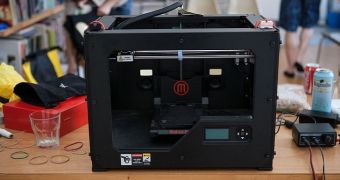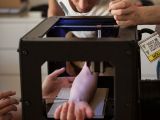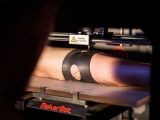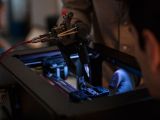Tattoos are looked upon with disapproval by many, but there are just as many people who consider them their own art and, given some of the more extensive and thorough works, we can see where that opinion would come from. Soon enough, though, tattoo parlors might no longer be using actual people to make the tattoos.
What we have just learned kind of puts a dent into the idea that tattoos are something that only sure-fingered artists can properly etch into the skin.
Not long ago, the French Cultural Ministry challenged people to remix images and sounds in the public domain.
A group of three French students (Pierre Emm, Piotr Widelka and Johan Da Silveira) thought outside the box and took a MakerBot 3D printer, hacked the living lights out of it and turned it into a tattoo artist.
That's pretty amazing considering that the 3D printer normally builds small figurines and other objects out of plastic.
At an event hosted by famous Paris design school ENSCI les Ateliers, the three students created tattoos from a bank of images they had with them. The Makerbot 3D printer successfully etched the designs on the skin.
They had to modify not just the software, but also the hardware. After all, recipients had to be able to stick their arms into the contraption, and the vertical mobility of the nozzle had to be restricted.
First, the trio replaced the nozzle with a homemade alternative. After that, they installed the tattoo gun and made sure it wouldn't vibrate while the printing was going on.
To keep the skin taut, they built a tube with an open area where the skin was supposed to be marked. It means that designs can only be etched on the arms, but then there’s always a catch.
The printer and needle were sterilized of course, as was the skin, and the ink was loaded in the gun before the arm was stuck in the printer. Once all the preparations were done, the team started the motor and pressed “print.” They proved the accuracy of their invention by printing a circle, which is very hard to draw by hand.
To learn what and how to modify in the MakerBot 3D printer, the three French students borrowed a manual tattoo-machine from an amateur tattooist and went through a few trial tests to see if the printer could do some etching on artificial silicon skin. In the end, one of the trickier parts was how to get the skin to stay taut during the process.
Pierre Emm, Piotr Widelka and Johan Da Silveira don't seem to have plans of commercializing their invention, the 3D-printer-turned-tattoo-expert, but they did publish the instructions on Instructables.

 14 DAY TRIAL //
14 DAY TRIAL // 


